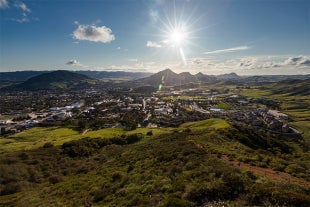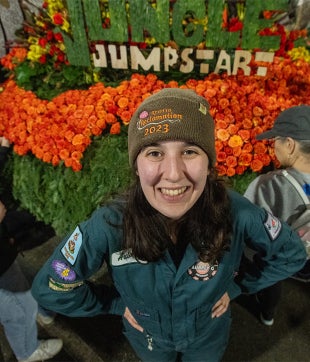2022 Incoming Class is Once Again Most Diverse in University History
Contact: Keegan Koberl
805-458-9302; kkoberl@calpoly.edu
SAN LUIS OBISPO — Cal Poly announced today that its 2022 incoming class is again the most diverse in the university’s history.
Following the official fall census count, the university confirmed the incoming class includes the highest-ever percentages of women; students from partner high schools; first-generation students; Asian students; and Hispanic/Latino students. The class is extremely high-performing, with the GPA of the incoming class of first-time, first-year students being the highest in Cal Poly’s history.
This year’s numbers continue a trend of Cal Poly’s incoming student classes being increasingly diverse. For the last five years, each incoming class has been the university’s most diverse ever.
“This tremendous progress is the result of intentional and strategic work to make Cal Poly more reflective of the diversity of our state and more accessible to underrepresented students,” said Cal Poly President Jeffrey D. Armstrong. “This includes eliminating early-decision enrollment, creating more opportunities for students at Partner Schools to come to Cal Poly, starting and continuing to grow the Cal Poly Scholars program and, most recently, adjusting our College Based Fee to provide greater opportunity for first-generation and lower-income students.
“However, while Cal Poly is growing more diverse and we are better reflecting California, we still have more work to do.”
The 2022 incoming class includes all-time high percentages of:
- Women, at 51.44%;
- Students from underrepresented communities, at 27.37%;
- Hispanic/Latino students, at 24.48%;
- Asian students, at 14.3%;
- First-generation college students, at 16.6%;
- Students from Partner Schools, at 20%.
Admission to Cal Poly continues to be highly competitive. For Fall 2022, the university received over 68,000 undergraduate applications, a new record high and up 3.5% from 2021. Over 5,100 first-time first-year students joined Cal Poly in the fall — the second-largest incoming class of such students in campus history.
In February, Cal Poly’s College Based Fee was increased for students beginning in Fall 2022 to help fund financial aid and scholarships for lower-income students and to fund the university’s academic mission.
For the first time, Cal Poly was able to offer significant financial aid to all Pell-eligible California residents who gained admission, as well as all the successful applicants from Cal Poly partner high schools with an Expected Family Contribution (EFC) of up to $12,000. For the first time in decades for students with $0 EFC, Cal Poly’s net cost of attendance was lower than at the University of California. The full fee increase is being phased in over four years, with increased funding being generated each year for financial aid.
“It’s important that students who are interested in Cal Poly know that we are creating opportunities for them and reducing barriers,” said Terrance Harris, Cal Poly vice president for Strategic Enrollment Management. “Decreasing our cost barrier to lower-income students will be key in enhancing our ability to recruit these students and give them the opportunity to attend Cal Poly.”
Cal Poly is also working toward becoming a Hispanic-Serving Institution (HSI). The university’s Office of Diversity and Inclusion established a “Pathway to HSI Taskforce” comprised of students, staff and faculty with expertise and/or experience working with communities of color, in particular Latinx populations.
The taskforce worked with Dr. Gina Garcia, a leading scholar on HSIs, on developing and launching a set of campuswide initiatives and goals to define what it means to become an HSI and attain that status. The taskforce will also be developing a set of yearlong campuswide programs, panels, and discussions to engage the campus community in this effort.
As defined under the Higher Education Act (HEA), HSIs are colleges or universities where at least 25 percent of the undergraduate, full-time enrollment is Hispanic and at least half of the institution's degree-seeking students are low-income. Cal Poly has been designated as an Asian American-, Native American-, and Pacific Islander-serving institution since 2020.



